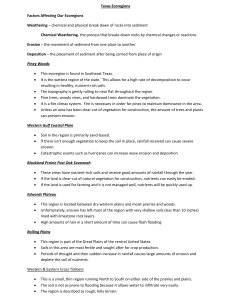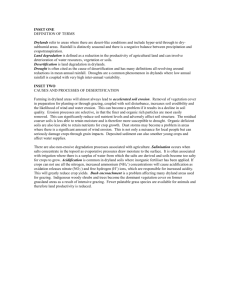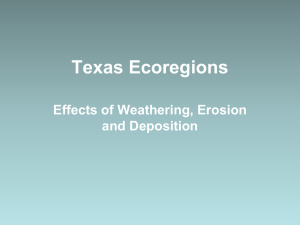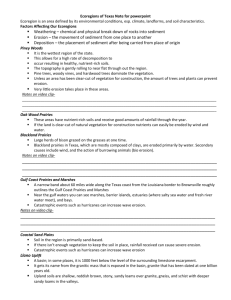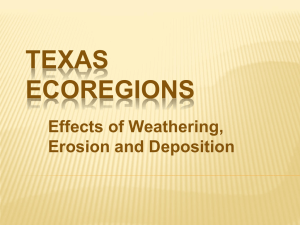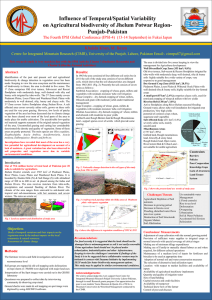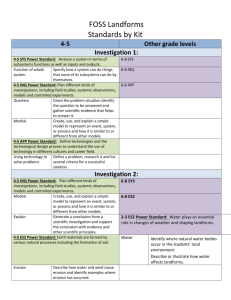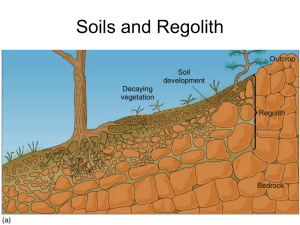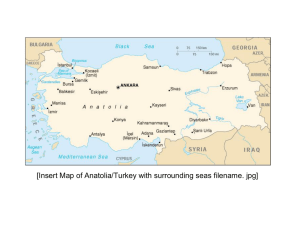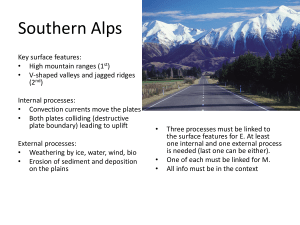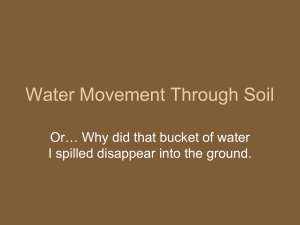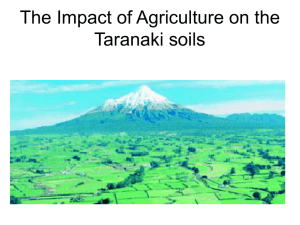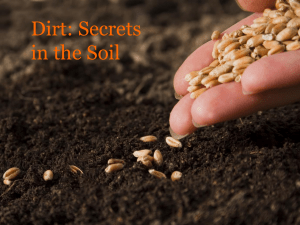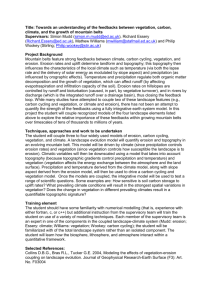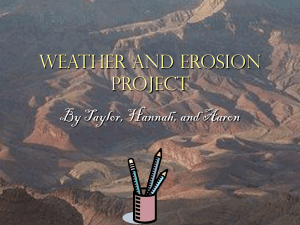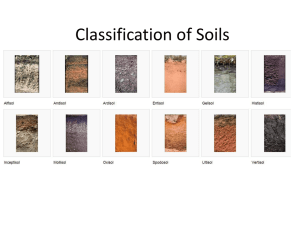Texas Ecoregions Effects of Weathering, Erosion
advertisement
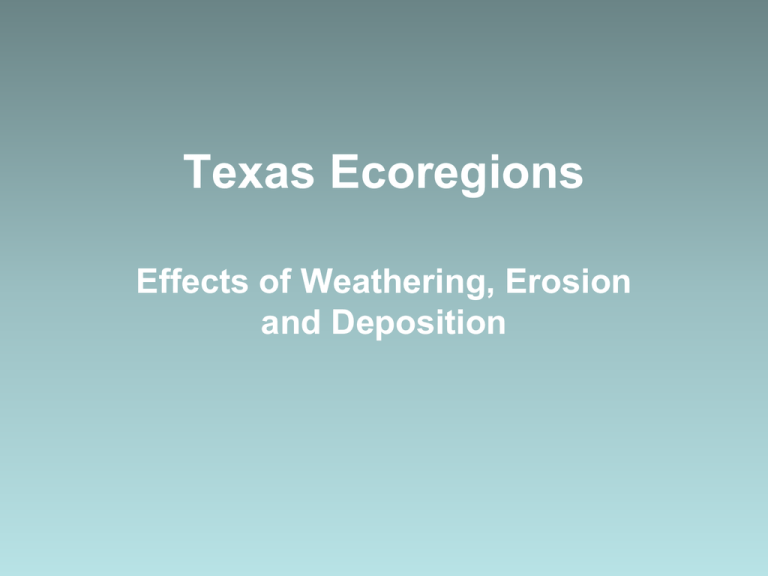
Texas Ecoregions Effects of Weathering, Erosion and Deposition Factors Affecting Our Ecoregions Weathering – chemical and physical break down of rocks into sediment Erosion – the movement of sediment from one place to another Deposition – the placement of sediment after being carried from place of origin i. Piney Woods 1. This ecoregion is found in Southeast Texas. 2. It is the wettest region of the state. This allows for a high rate of decomposition to occur resulting in healthy, nutrient-rich soils. 3. The topography is gently rolling to near flat through out the region. 4. Pine trees, woody vines, and hardwood trees dominate the vegetation. 1. It is a fire climax system. Fire is necessary in order for pines to maintain dominance in the area. 1. Unless an area has been clear-cut of vegetation for construction, the amount of trees and plants can prevent erosion. ii. Gulf Coastal Plain 1. Coastal region; soil in the region is primarily sand-based. 2. If there is not enough vegetation to keep the soil in place, rainfall received can cause severe erosion. 3. Catastrophic events such as hurricanes can increase wave erosion and deposition. iii. Blackland Prairie • Precipitation 35 to 45 inches • Topography Ranges from gently rolling hills to level land. • Soils Upper Cretaceous marine chalks, limestone, and shale give rise to the development of the characteristic black, heavy clay soils. • Vegetation Description Perennial and annual grasses. Live oaks are the trees that dominate a large part of this eco-region. • Impacts of Fire For the most part fires in this eco-region no longer greatly impact vegetation. iv. Edwards Plateau 1. This region is located between dry western plains and moist prairies and woods. 2. Unfortunately, erosion has left most of the very shallow soils (leregion with ss than 10 inches) lined with limestone rock layers. 3. High amounts of rain in a short amount of time can cause flash flooding. v. Rolling Plains 1. This region is part of the Great Plains of the central United States. 2. Soils in this area are most fertile and sought after for crop production. 3. Periods of drought and then sudden increase in rainfall causes large amounts of erosion and deplete the soil of nutrients. vi. Crosstimbers and Prairies 1. This is a small, thin region running North to South on either side of the prairies and plains. 2. The soil is not as prone to flooding because it allows water to infiltrate very easily. 3. The region is described as rough, hilly terrain. vii. High Plains 1. “Texas Panhandle” 2. Largest and most completely flat areas of it size in the world! 3. The region extends to the Palo Duro Canyon-the nation’s 2nd largest canyon. 4. Palo Duro Canyon was formed by water erosion from the Prairie Dog Town Fork of the Red River. 5. The water deepens the canyon by moving sediment downstream. 6. Wind and water erosion gradually widen the canyon. vii. South Texas Plains 1. The area is known as “Brush Country” due to the shorter trees and many shrubs. 2. Overgrazing of the land has allowed nutrient-rich topsoil to erode way. 3. Rocky, dry soil cannot support grasses, trees can thrive because of their deeper root system. ix. Post Oak Savannah • Precipitation 35 to 45 inches • Topography Forested areas in the western region of the Post Oak Savannah are generally restricted to bottomland areas associated with water. • Soils Soils range from a clay to sandy soil. • Vegetation Description Dominated by native bunch grasses and scattered post oaks. • Impacts of Fire Fire has been completely removed from the management of this eco-region to support the raising of cattle. x. Mountain and Basins 1. Home of the tallest mountain in Texas, Guadalupe Peak. Elevation is 8,749 feet. 2. Pines and Oaks dominate the tree species. 3. Soils are shallow and rocky. Weathering continues to play a role in developing soil and will for thousands of years to come. 4. Soils in the canyon bottoms and valleys are deeper as a result of deposition.
